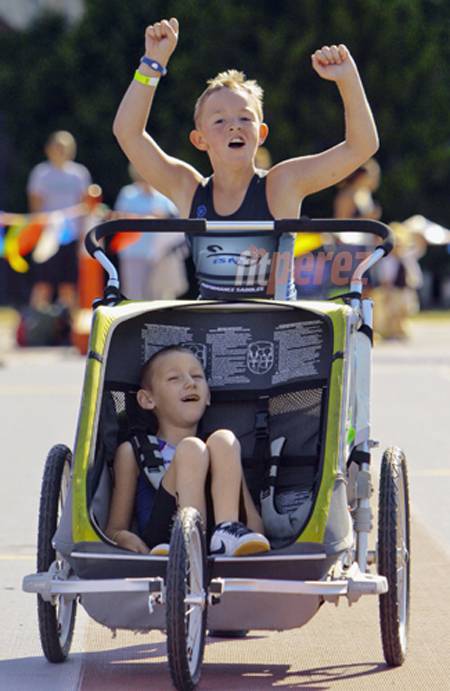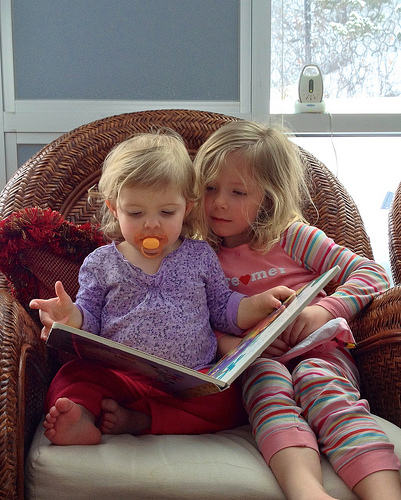Using Speech Therapy to Bring Siblings Together
Maybe by now you’ve seen these brothers, Caden and Connor Long, named Sports Illustrated Kids of the year in 2012. What makes them so special is that sibling bond, even though Caden can’t talk. Caden has cerebral palsy and despite speech-therapy, struggles to communicate verbally. But what’s a few words between siblings? To Connor and Caden, they have formed a bond in much more than spoken language. They don’t just bike, run marathons or play soccer. As a team, they complete triathlons together – with Connor pulling or pushing Caden through each event. While a communication impairment can be a struggle for families, it can also bring them together.
The Challenges:
Perhaps your child has younger or older siblings. Challenges with communication disorders can be many, and can occur at any age including:
- Misunderstandings. Siblings can often feel frustrated that their sibling doesn’t understand or communicate clearly.
- Jealousy. Though it can be hard to explain, siblings of children with special needs can feel a lot of emotions and left out with all the therapies, appointments and new special toys their sibling might need for therapy.
- Attention. Sharing a parent’s attention can be hard, especially when children with communication needs require extra processing time or more feedback or praise from mom and dad.
But there are many ways to make siblings a part of speech therapy, by using opportunities for language learning, engagement and sibling companionship.
Give a Leadership Role:
Siblings, both older and younger, can all appreciate and feel proud of themselves for being a “leader.” If your other children struggles with any of the above challenges, try framing their role as a “leader” or “teacher” to their sibling and give them responsibilities too. A leader can show their sibling how to play a game first, give their sibling instructions, or model appropriate behavior.
Teach Siblings Alternative Modes of Communication:
For someone like Connor and Caden, nontraditional and augmentative means of communication will be important. While parents and teachers often learn to use pictures, sign language or communication devices, siblings tend to get overlooked. Instead, encourage your children to learn these new methods as well. Show them the sign language your other child is practicing and model the use of picture communication systems they can use as well.
Encourage Positive Modes of Communication
Reward and acknowledge your children’s positive communication style with their sibling. Giving them credit for the small things will add up in the long run. For example, if you notice them giving instructions slowly, give them positive feedback such as, “I saw how you repeated your instructions and gave Johnnie lots of time to follow them, he really got it!”
Make Language A Family Activity:
Turn Taking: Siblings can be the best therapy for a child with a communication disorder, they are a built in play partner. Try incorporating language-based games that encourage turn taking among siblings. These can be: Simon Says, I Spy, Mother May I? or traditional board games.
Reading: Incorporate reading into your family’s routine at bedtime or on a rainy Sunday. Reading is a great activity for siblings to share- one can practice reading, one can turn the pages. Both can listen to mommy or daddy and everyone can relax at once. Reading is a great opportunity to model language, ask questions, make predictions and learn new vocabulary.




